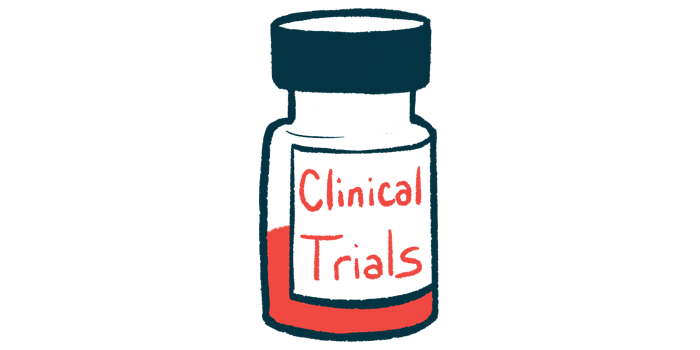Three years of CAP-1002 still stabilizing arm, heart function
Topline data from Phase 3 HOPE-3 trial is due by the end of the year

After three years of treatment with Capricor Therapeutics’ experimental cell therapy CAP-1002, people with Duchenne muscular dystrophy (DMD) continue to show benefits in arm and heart function, new data from the HOPE-2 open-label extension (OLE) study shows.
Topline data from the Phase 3 HOPE-3 trial (NCT05126758), which is testing the therapy in DMD patients, ages 10 and older, with impaired muscle function, is expected by the end of the year.
“I am extremely encouraged by these positive results from our HOPE-2 OLE study, which continue to support the long-term impact of CAP-1002 for the treatment of DMD,” Linda Marbán, PhD, Capricor’s CEO, said in a company press release. “We remain on track to announce topline results from our Phase 3 HOPE-3 pivotal trial in the fourth quarter of 2024.”
HOPE-2 was a placebo-controlled Phase 2 study (NCT03406780) that evaluated CAP-1002 in 20 DMD boys and young men in the later stages of the disease, many of whom couldn’t walk. The trial met its primary and secondary outcome measures by demonstrating that the therapy, administered directly into the bloodstream every three months, improved arm and heart function over the placebo.
After completing HOPE-2, all the participants stopped the treatment for up to 1.5 years. Among the 13 HOPE-2 patients who decided to join the OLE study, six had initially been assigned CAP-1002 and seven the placebo.
Improved arm and heart function
After a year of OLE treatment, CAP-1002 significantly improved arm function, as indicated by Performance of the Upper Limb (PUL), an assessment of day-to-day functionality in the shoulders, elbows, wrists, and hands.
At three years, CAP-1002 significantly slowed the decline of upper limb function compared with an external comparator dataset of similar DMD patients. Among treated patients, there was a decline of 4.1 PUL points versus a 7.8-point decline in the comparator dataset, a 3.7-point improvement.
Stabilization in the left ventricular ejection fraction (LVEF), the percentage of blood pumped from the left ventricle with each heartbeat, suggested preserved heart function, according to the release.
“Importantly, the external comparator of the disease shows a steady state of decline in both skeletal and cardiac function,” Marbán said. “However, over the course of [three] years, we observed a statistically significant reduction in PUL decline as well as stabilization in LVEF in CAP-1002 treated patients, suggesting sustained disease attenuation.”
CAP-1002 treatment during the HOPE-2 OLE continued to be well tolerated, consistent with what was seen in previous studies.
What will HOPE-3 assess?
The HOPE-3 study, open to DMD patients who can or cannot walk independently, will test CAP-1002, given every three months, against a placebo. Its primary goal is to determine the treatment’s effect on arm and hand function via PUL after a year. Secondary measures include the impact on cardiac function and other functional evaluations.
A total of 58 patients, dubbed group A, will be assigned either a placebo or CAP-1002, manufactured at Capricor’s facility in Los Angeles. Group B represents a second group of about 44 participants, who will receive a placebo or CAP-1002, manufactured at the company’s facility in San Diego. Enrollment for Group A has been completed, and Group B enrollment is ongoing.
In December 2023, the study’s independent Data Safety Monitoring Board (DSMB) recommended that HOPE-3 continue following an interim futility analysis, which evaluated whether the trial could achieve its goal.
In a prior meeting with the U.S. Food and Drug Administration (FDA), the agency confirmed that HOPE-3 data, if positive, would be sufficient for a Biologics License Application (BLA) seeking the therapy’s approval. In May, the company shared the results with the FDA.
“At our recent Type-B meeting with the [FDA], we shared these results with the FDA to support what we expect to see in the HOPE-3 pivotal study as we continue to work on strategies for the most expeditious pathway to potential BLA approval and commercialization,” Marbán said.
Sourced from the heart tissue of a healthy donor, CAP-1002 is composed of cardiosphere-derived cells, precursor heart cells that release signaling molecules to promote heart health.
The therapy has been granted rare pediatric disease, orphan drug, and regenerative medicine advanced therapy designations in the U.S. that are intended to support its development. The company plans to share HOPE-2 OLE data at this month’s Parent Project Muscular Dystrophy (PPMD) 30th Annual Conference.
“We continue to thank the patients, families and the broader Duchenne community for continuing to work with us on this promising therapy,” Marbán added.







